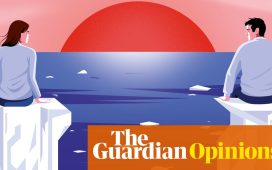When my mother turned 90, I visited her for a few days to bask in nostalgia, and sift through memorabilia. The prize find among her things was a folder of fragile documents, tied with a pink ribbon: letters from a love long past, the revered Australian artist Charles Blackman, my father.
The letters were written during my parents’ courtship, when they lived in separate cities: my father in Melbourne; my mother in Brisbane. His scribbly handwriting was warmly familiar, scarcely legible, his youthful prose beating with the anxiety of distanced love.
Oh Barbara, dear Barbara. Now is the time I could love you. I span the miles that separate us and pour the liquid fire of my love into your graceful soul and you open like a flower and enclose me forever.
Mum and I paced gently through the letters, stopping for a nap, cup of tea, piece of music, glass of champagne – sometimes all at once. It was a wilful submersion into the sentimental landscape of her past, with all the distortions that memory imposes over the meanderings, mistakes and losses of life. Their marriage spanned a quarter of a century; for as long as it was good, and perhaps a bit longer, before divorcing in 1978. My father had recently died.
Charles grew up on the northern beaches of Sydney. When he was five his father abandoned his family with far-reaching, traumatic consequences for all. His mother, Daisy, was emotionally ethereal, and their home was abuzz with unharnessed melodrama and spontaneous passion. When she couldn’t manage the four small children, she sent them off to a children’s home, to become temporary wards of the state.
Charles became resourcefully independent yet insecure and haunted by the deep loneliness of abandonment. He had been drawing relentlessly since the age of eight – “Drawing is an act of the hand, the eye and your dreams,” he would later tell us. “It’s like wrapping a line around your dream” – and left school at 13 to work as a copy boy at the Sydney Herald, later moving to the art department where he did illustrations and touched up photographs. He attended night classes at the National Art School and sought out peers in the arts, which steered him to Brisbane with a fellow artist, Laurence Hope.
Barbara came from a comparatively secure home in Brisbane, had lost her father at three and was raised by her working mother. An accident at birth resulted in the gradual loss of her eyesight but she had an intelligent and joyous wit. While studying at uni she worked part-time at the Ballard bookshop, where radical intellectuals gathered to give philosophy, literature and poetry a good bantering. Charles came across Barbara sitting in the stairwell there, at a party in 1948. She looked outcast from the surrounding social buzz. His first words to her were, “What are you doing here? Let me give you a bit of advice. Go home!”
The second time they met, a few weeks later, he fell in love. It was his 21st birthday.
Charles became a frequent visitor to the bookshop, picking up a key to the Carnegie Art library that was held there. In her 1977 memoir, Glass After Glass, Barbara describes her first impression: “A small scruffy muscly painter from Sydney, with eyes bigger than himself but no words to speak of … He had long eyelashes and a fawn like grace and by his prolonged staring at me when he returned the key I gathered that he had by no means locked himself out.”
He charged her with emotional excitement, transforming her vanishing visual world into a minefield of images. For her part, her love of literature, humour and intellect provoked the lucidity that lurked within him, and helped transform him into an original thinker.
Charles was unswervingly determined to be an artist and Barbara agreed to join him on this path, rapidly becoming a steering force. They decided that Charles should move to Melbourne to be closer to the emerging cultural scene there. He hitchhiked down and found work fruit picking in the meantime.
I’m naked, lonely and without you, weeping does me no good, and when you come to mind I shudder, and cry on the shoulder of the nearest thought.
His first encounter with John, Sunday and Sweeney Reed is told in a letter, as is his weekend with the artists Joy Hester and Gray Smith, and his first trip to Murrumbeena to meet the painters Arthur and David Boyd, as well as the potter John Perceval. At this time a new voice for Australian creatives and intellectuals was emerging; swinging pendulums that, when hung together, synchronise to an exacting rhythm. The Melbourne creative scene worked at Charles with a magnetic force.
From a letter he wrote to Barbara, who had stayed behind in Brisbane:
Here is a note torn from the depths of a painters fanatic mind. It is so hard for me to make contact, my energies are obsessed with paintings, the problems are endless, chain upon chain. My personality is completely sucked under. I’m a shivering mass of intense energy carving a steady path into myself.
The word love is mild.
I am yours.
Charles
Back in the present day with my 90-year-old mother, she has dozed off with an empty champagne glass angled in her hand, Steve Reich playing insistently on loop. I read the words from a fragile shard of the past and weep for the beauty that dominates the persuasive shadows of my parents’ past, my past. This story has a tightening grip on my heart and won’t let loose till it is told.














